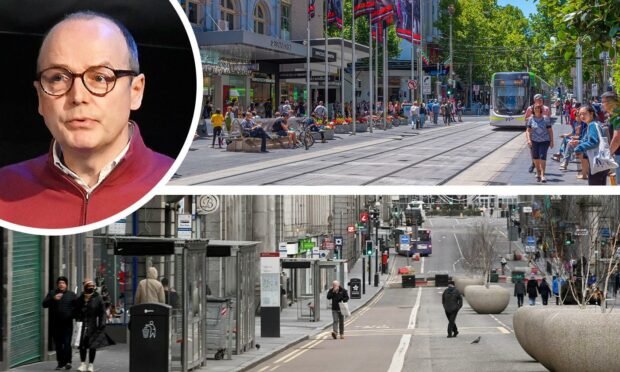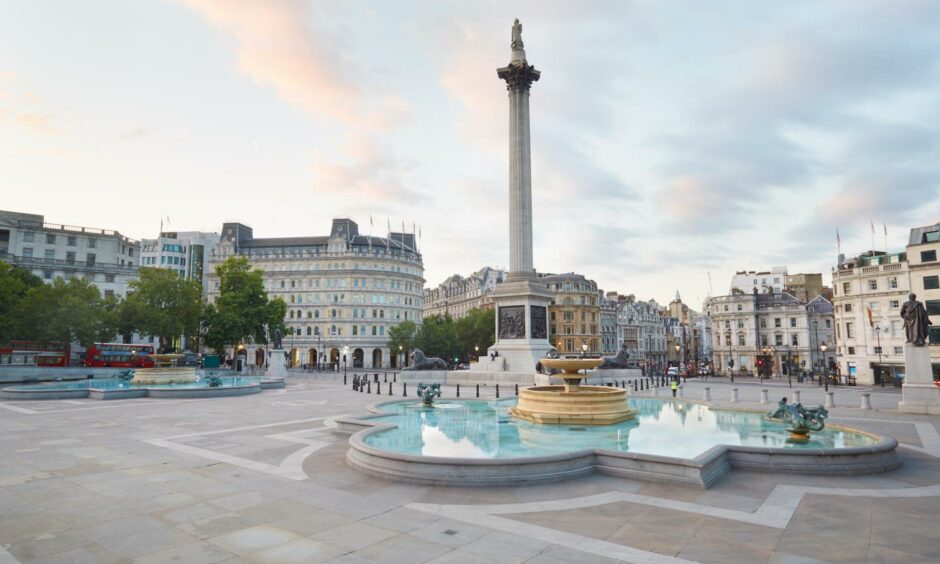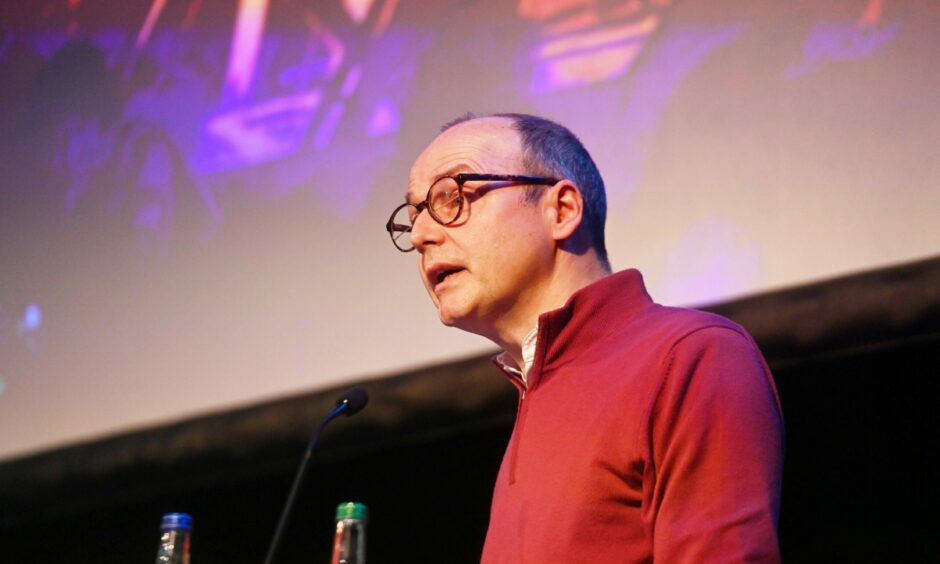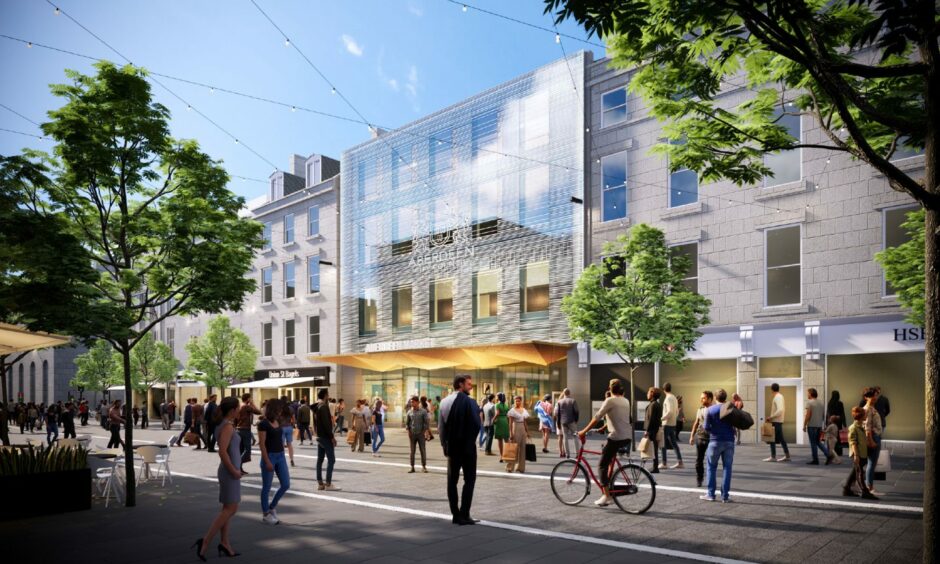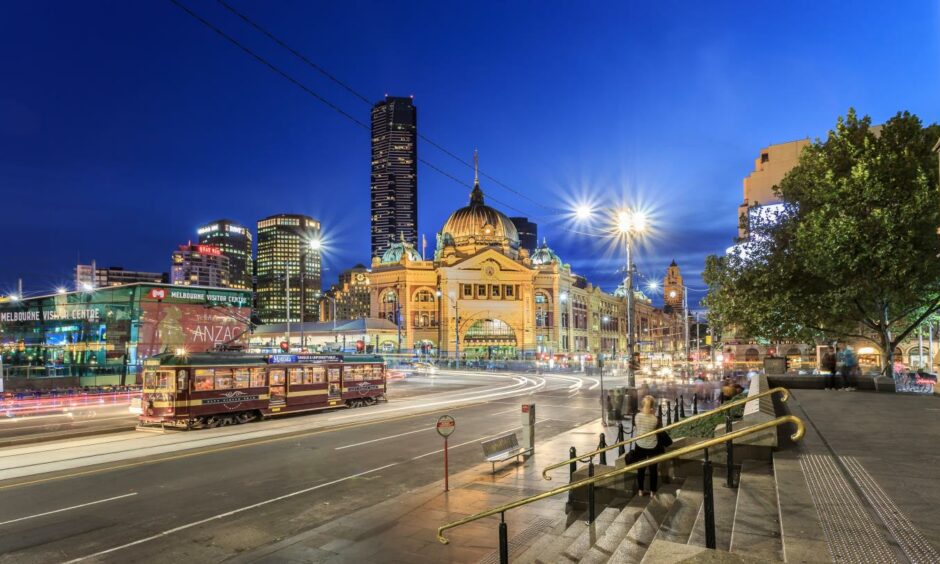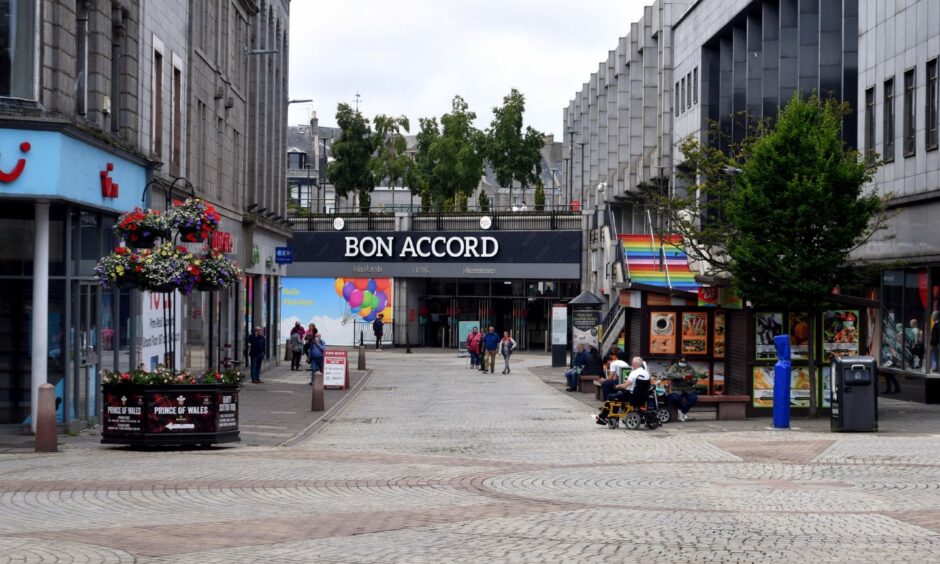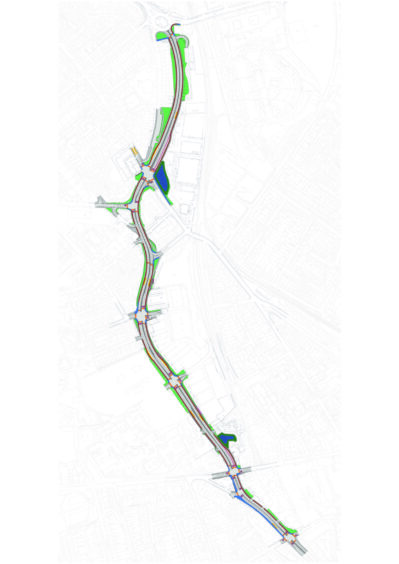A world leader in city planning is urging Aberdonians to look Down Under for a vision of the city they want – before voting to sink pedestrianisation plans for Union Street.
The fate of the Granite Mile could overshadow all other local issues come polling day in May following months of contention at the Town House.
But Tim Stonor is warning people to think beyond Aberdeen’s main thoroughfare when casting their vote.
The architect designed the pedestrianised Trafalgar Square in London, and more recently provided input in the overhauls of Australian cities Melbourne and Darwin.
And the renowned urbanist – who designs based on science and how humans interact with spaces around them – has now turned his attentions to Aberdeen.
He was visiting for the first time to speak at a conference on the future of the city.
From his keynote speech and a sit-down interview with The P&J afterwards:
- Why Aberdeen voters should not make May’s election all about Union Street
- His first impressions of the Granite Mile, approaching from the railway station
- The places Aberdeen might learn from before deciding the future of the city centre
- And his despair at discovering the Denburn Road dual carriageway and plans for the Berryden Corridor improvements
May’s Union Street election?
It comes less than two months from polling in the local elections and only weeks after councillors sensationally put long-term pedestrianisation of Union Street on ice.
A final decision on the £150 million city centre and beach masterplans will be taken by the new council in June.
Speaking to The Press And Journal, Mr Stonor said: “I think it’s really important that people discuss what they want from their city centre – working with data, science, and precedent already in other cities.
“The easy thing is to make this election about one single issue: to pedestrianise Union Street or not.
“But actually whether you do or don’t is not going to make the big difference to what happens in the rest of the city – it needs to be about the whole of the city.”
Tim Stonor’s first impressions of Aberdeen’s connectivity? ‘Urm, not good…’
He declined to comment directly on whether to permanently ban traffic from the Granite Mile, as a visitor in the city for less than a day.
But the planner did reflect on his first impressions of the city, a journey from the railway station up across Union Street.
The verdict? “Urm… not very good,” the expert ruled.
“It’s not just that there is a level change, you have to deal with geography, it’s that the roads dominate.
“But that is a challenge worldwide.”
Inspiration Down Under? Aberdeen could learn from Melbourne, Tim Stonor says
Mr Stonor draws comparisons between the proposed way forward for Union Street and his own experience with the Victorian state capital in Australia.
The planner said: “I see lots of comparisons between Aberdeen and Melbourne – it is a city that has transformed itself away from being car-fixated and moved towards walking and public transport.
“And, it has a slow-speed cafe culture to boot. Aberdeen could follow that precedent.
“Copenhagen and Amsterdam are rightly cited as cycling and walking capitals of Europe but in the mid-1960s they were full of traffic.
“They are no different over there, it’s just they were on the journey earlier.
“The world is full of precedent so to borrow a quote: ‘The future is already here, it’s just unevenly distributed.'”
Ideas he suggested, which could be imported to make Aberdeen a less “car-obsessed” place, include a city-wide 20mph limit.
Leaning on data from the World Health Organisation, Mr Stonor said reducing speeds below 20mph would significantly reduce serious head injuries compared to 30mph roads.
It would also allow carriageways to be narrowed, “clawing back” extra space for cycling.
“Whatever Aberdeen does – pedestrianised or not – the streets around should create a slow speed culture.”
‘What on earth?!’ Aberdeen’s other bugbears for the visiting urban planner
During his keynote speech at P&J Live, where around 200 people had gathered for the conference on Aberdeen’s future, Mr Stonor revealed “what on earth?!” moments as he enjoyed a stroll of the city.
The first, the very idea of the Bon Accord Centre.
Built in the 1980s, the shopping mall – in his eyes – is “counterintuitive” in its positioning, where historically George Street and Market Street would meet on Union Street.
His other bugbear was the dual carriageway in Denburn Road, which “doesn’t even go anywhere!”, Mr Stonor told the crowd.
“What on earth is a major highway like that doing slicing the city centre?– it doesn’t even go anywhere! Why does it get bigger and fatter as it reaches the centre?”
After his speech, The P&J informed him of the Berryden Corridor project – which will add a dual carriageway all the way from Skene Square to the Kittybrewster roundabout in the hopes of cutting congestion.
Last priced at £26.4m, the project has been spoken about for years.
Queue-busting Berryden Corridor dual carriageway like ‘fixing obesity by loosening belt’
The council has now won a compulsory purchase order battle to acquire land needed to have it built.
“The point I was making about Denburn Road is that it strikes me as very strange in the middle of the city,” he told us. “A very wide, car-dominated environment.”
“There is a quote from (American writer) Lewis Mumford that ‘fixing traffic congestion by building more traffic lanes is like fixing obesity by loosening your belt’.
“What are other cities are looking to do is invest in public transport and invest in cycling – or both.
“Everywhere I go the consistent thing is: ‘we have the worst drivers, the most car-obsessed people and the worst traffic congestion’. It’s like a bingo card.
“But it is the places that have made the effort that have seen the benefit.”
